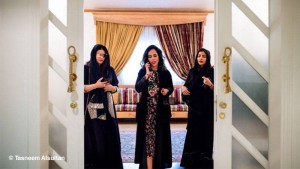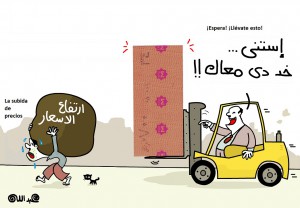A report on Sustainable Energy in Arab countries was published at the opening of the annual congress of the Arab Forum for Environment and Development (AFED), held on 28 -29 October at the American University of de Sharjah. The report warns that about 60 million Arabs lack access to modern energy, especially electricity, even though the intensity of energy consumption in the region is among the highest in the world. However, the Arab region, unlike many parts of the world, benefits from many sources of clean energy, especially solar and wind energy.
The report shows that, just by improving efficiency, the Arab region can reduce energy consumption by half while retaining the same production levels. In this context, the report stresses the importance of regional cooperation in the production and distribution of energy and concludes that if the Arab countries commit to appropriate policies and investments they could be a major player in the global community of clean energy. Following this strategy will create real jobs for its citizens and renewable energy, as well as oil and gas, will be exported. However, the report noted that uncontrolled subsidies to conventional fuel and electricity prices, reaching 95 % in some cases, prevents the development of renewable energy on a large scale and does not stimulate private sector investment. It also hinders the improvement of energy efficiency, which averaged less than 50% in the Arab region.
Since the beginning of 2013, 64 new renewable energy projects have been launched. They have a total capacity of about 6 gigawatts, which will mean quadrupling the current capacity.
During 2013, the total new investment in renewable energy in the region during 2012 reached US$1.9 billion, multiplying by six the total investment in 2004. In comparison, global investment in renewable energy in the same year was US$244 billion.
At the end of 2012, at least seven Arab countries, with Egypt in the lead, have wind power capacity. Concentrating Solar Power (CSP) plants are also expected to increase. More than 30 % of the countries operating CSP plants in the world are Arab countries, namely Algeria, Egypt, Morocco and the United Arab Emirates (UAE). In March 2013, the UAE became a major player in the CSP market after building the Shams 1 plant. This plant is considered the world’s largest CSP plant and has a generating capacity of up to 100 megawatts (MW). On the other hand, Saudi Arabia has set an ambitious target to meet 33% of its national energy needs from renewable sources by 2032.
Today, 20 Arab countries have policies with clear objectives, while 16 of them have adopted a certain level of appropriate policies for renewable energy, such as tax incentives, preferential tariffs and public funding.
Facts about the future of renewable energy in the Arab world
It should be recalled that the report published by Greentech Media predicts that, between 2013-2017, the Middle East and North Africa will record a growth in the field of solar energy that will lead to the production of a total of 10 gigawatts by 2017.
Likewise, Anita Matthews , director of the Informa Energy Group said that «the renewable energy sector in the Middle East and North Africa is growing rapidly and many countries in the area have announced various projects to take advantage of the abundant sources of available energy in the region, as well as promoting the growth of economies.» Matthews added that «statistics show that as of April 2013, the countries of the region have announced plans to launch 106 renewable projects that are expected to produce a total of 7.5 gigawatts of electricity. Much of the demand for solar energy will come from Saudi Arabia that will lead the industry with its claim to put the first gigawatt in the market in 2015.»
The total cost of power generation, transmission and distribution in the market of the Arab world will amount to US$283 billion in 2018. In the renewable energy sector, it is predicted that projects generating 75 MW will be carried out that will cost US$200 billion. This will turn the area into a world power in this sector.
This large increase in investment is due to increased energy consumption in the Middle East, which records the largest growth in the world together with Asian countries. Only in the countries of the Gulf Cooperation Council (GCC) it is expected that the capacity of power generation will increase by 64,000 to reach 176,500 MW by 2020. This will require an investment of between US$40-45 billion.
Source: Afaq al Bia, 20/11/13, Zawya, 07/11/13 and 13/11/13







Aún no hay comentarios, ¡añada su voz abajo!